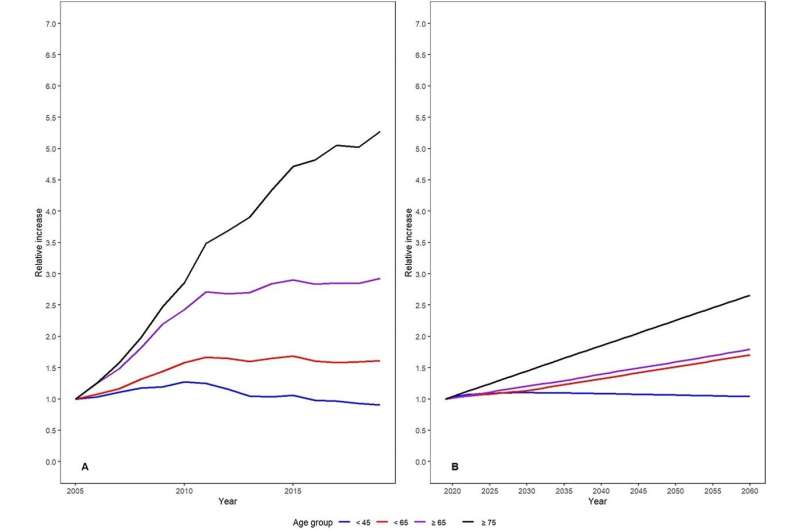This article has been reviewed according to Science X's editorial process and policies. Editors have highlighted the following attributes while ensuring the content's credibility:
fact-checked
peer-reviewed publication
trusted source
proofread
Increasing demand for posterior spinal fusion procedures will strain healthcare systems

The demand for posterior spinal fusion procedures is expected to increase by more than 80% by 2060. The demand will be even greater among older patients, who often need more costly care, placing an enormous strain on healthcare systems. These projections come from a study published in Clinical Orthopaedics and Related Research.
Spinal fusion is one of the most costly surgical procedures performed in developed nations, and in recent decades its use has become more frequent. Populations of industrialized countries are aging, and the higher proportions of elderly individuals are expected to lead to even higher demand for spinal fusion, with resultant increased costs.
To find out how the use of posterior spinal fusions in Germany will change as its population ages, Vincent J. Heck, MD, of the University of Cologne, Cologne, Germany, and colleagues examined comprehensive nationwide data provided by the German Federal Statistical Office. They estimated posterior spinal fusion rates as a function of calendar year, age, and gender.
The largest increases in the use of posterior spinal fusion will occur in patients ages 75 and older
Dr. Heck's group predicts the use of posterior spinal fusion will increase to 102 procedures per 100,000 residents by 2060, an increase of about 83% compared with the years 2005 to 2019. The number of women undergoing the surgery will be 1.3-fold higher by 2060.
The highest estimated increase will be among patients 75 years and older, with 38,974 posterior spinal fusions projected to be performed in 2060 compared with 14,657 in 2019. This trend will apply both to older women and men, with a 246% increase in the total number for women 75 years and older and a 296% increase for men 75 years and older. At the same time, the number of posterior spinal fusions in all age groups younger than 55 are projected to stay constant or even decline up to 2060.
The implications for healthcare systems include:
- A larger number of patients undergoing posterior spinal fusion surgery will have age-related comorbid conditions such as osteoporosis, cardiovascular disease, and age-related loss of muscle mass
- The population of patients having the surgery will be at increased risk of postoperative complications, longer hospital stays, and being discharged to skilled nursing facilities or other places besides their homes, ultimately resulting in higher healthcare costs
Planning ahead and improving perioperative care may help reduce the load
Dr. Heck and colleagues say, "Our findings suggest that increasing use of posterior spinal fusion, particularly in patients 75 years and older, will challenge healthcare systems worldwide if current trends persist." These data are from one European county, but the authors explain that many other developed countries have had comparable procedure-specific trends in the past and will face similar demographic changes in the future. Therefore, the projections about posterior spinal fusion are likely to apply to healthcare systems in many other nations.
"Given the known risk factors associated with the surgical treatment of older patients, we think anticipatory human and financial resource planning, frailty as a focus of research, and the development of interinstitutional protocols that focus on effective perioperative medical care for these patients will be important elements of managing these trends in the future," the authors conclude.
More information: Vincent J. Heck et al, Projections From Surgical Use Models in Germany Suggest a Rising Number of Spinal Fusions in Patients 75 Years and Older Will Challenge Healthcare Systems Worldwide, Clinical Orthopaedics and Related Research (2023). DOI: 10.1097/CORR.0000000000002576



















